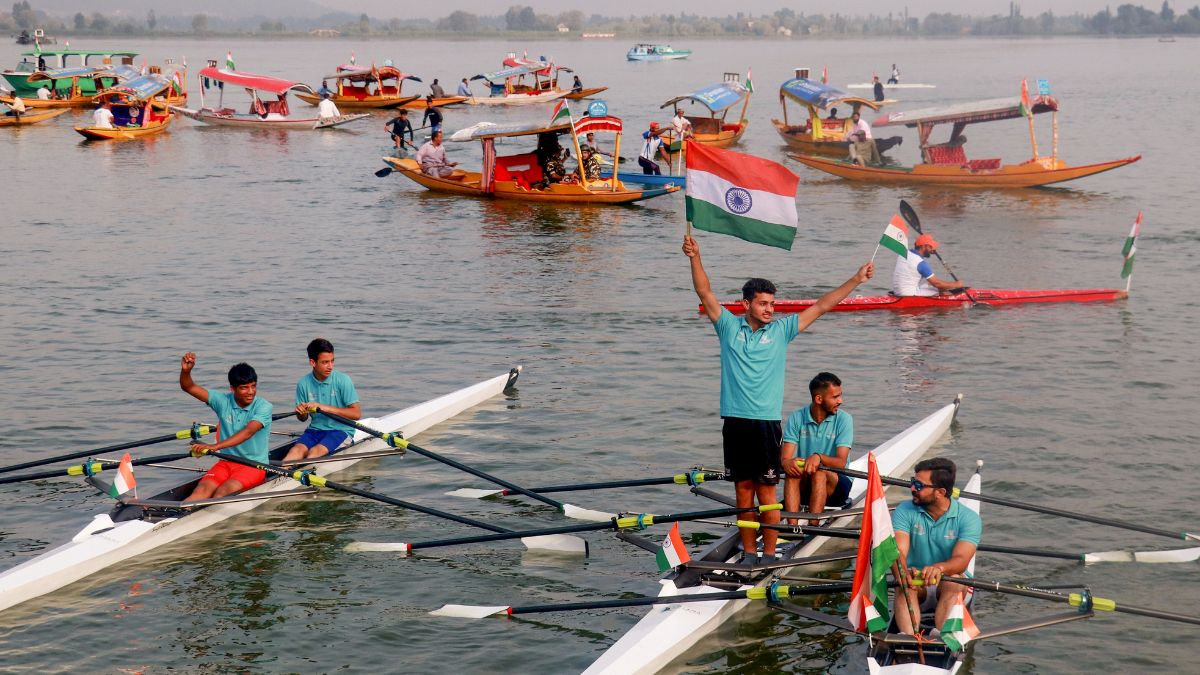- By Kamal Kumar
- Mon, 11 Dec 2023 08:00 AM (IST)
- Source:JND
The Supreme Court's Constitution bench is set to announce its decision on a set of petitions that question the abrogation of Article 370 and the division of the former state of Jammu and Kashmir into two Union territories on Monday.
Today, Chief Justice of India DY Chandrachud and Justices Sanjay Kishan Kaul, Sanjiv Khanna, BR Gavai, and Surya Kant, forming a five-judge constitution bench, are set to deliver the verdict. Following a 16-day hearing session, the apex court had reserved its judgment on September 5. During the proceedings, the central government justified its move to revoke Article 370, asserting that there was no "constitutional fraud" involved in the repeal of the special status granted to the former state of Jammu and Kashmir.
The Attorney General R Venkataramani and Solicitor General Tushar Mehta appeared for Centre during the hearing. The hearing is set to impact many key decisions taken by the central government in the last four years. From special status to Article 35, the long list of changes will witness the impact.
The special status of Jammu and Kashmir under Article 370
Article 370 became a part of the Indian constitution on October 17, 1949, serving as a 'temporary provision.' This provision granted special privileges to Jammu & Kashmir, allowing the state to formulate its own Constitution and limiting the legislative authority of the Indian Parliament in the region. However, the Parliament on 5th August 2019 made changes to the article to scrap these 'extra-constitutional' powers.
Article 35A
In 1954, Article 35A was incorporated into the Constitution under Article 370 through a presidential order, maintaining the previous regulations of the territory. This article granted the Jammu and Kashmir state legislature the authority to define the permanent residents of the area. It also prohibited individuals from outside the region from establishing permanent residency, acquiring land, securing local government positions, or receiving educational scholarships within the territory.
It also prevented women from Jammu and Kashmir from having property rights if they married someone from outside the former state.
Re-organisation of Jammu and Kashmir
Following the repeal of Article 370, the Central government also bifurcated the former state of Jammu and Kashmir into two Union Territories—Ladakh and Jammu and Kashmir. Ladakh became a Union Territory without a legislature, whereas Jammu and Kashmir retained a legislative body. Since August 5, 2019, no assembly elections have occurred in Jammu and Kashmir, and both Union Territories are currently under the administration of Centre-appointed lieutenant governors.
Delimitation of parliamentary and legislative constituencies
The Jammu and Kashmir Delimitation Commission, in May 2022, officially announced the updated boundaries, names, and the count of assembly constituencies in the region. This development is seen as an important step towards the inaugural assembly elections in the Union Territory.
